Ishtar Review

Ishtar: Gardens of Babylon, from Bruno Cathala and Evan Singh, is a combination of tile-placement and area control. The premise of the game pits you as rival gardeners, seeking to do the seemingly impossible – grow beautiful gardens in the middle of the desert. The king wants his queen to be happy, and apparently greenery is the way to do it. Who are we humble gardeners to question the whims of the monarchy?
Gameplay is simple. On your turn you’ll be picking up a vegetation tile from a seed bowl and putting it on the map somewhere. As the tiles go down, the gardens expand, containing lawns, flowerbeds and trees. Along the way you’ll be picking up gems, presumably freed from the rocks you break, as you expand your Titchmarshian floral empire. These gems can be spent on trees, which increase your score, and upgraded skills for your burgeoning gardening business. Score the most points, win the game. You know how these things work by now.

Playing by the rules
Ishtar caught me on my heels a bit. As I set it the game up and read the short rule book, I was thinking “This is going to play like Carcassonne, or something in that vein”. Play a tile, work on my little bit of the map, build up areas and try to milk points out of them. It didn’t take long to realise I underestimated the level of strategy at play.
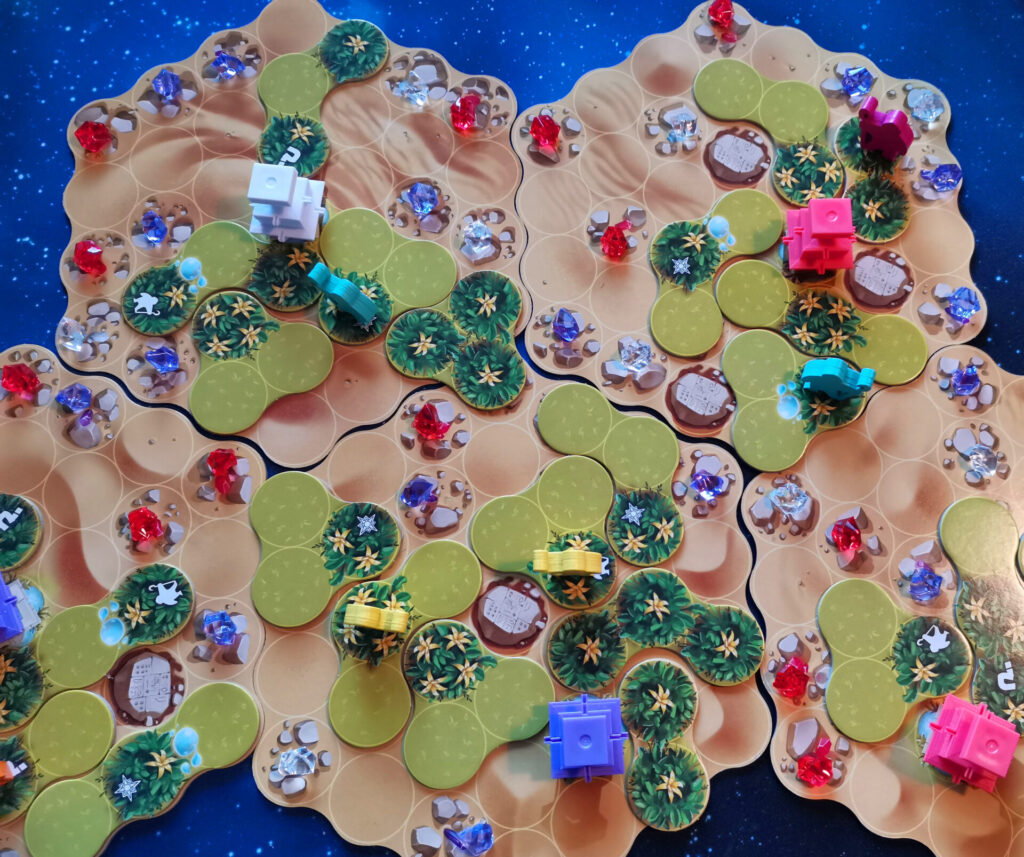
There are rules about what can be placed next to what – or more accurately, what cannot be placed next to something – so there’s potential for giving someone a really bad day. You see, the vegetation tiles you place are one of three shapes, which means if you’re not careful, you can easily find that some spots on the board become geometric impossibilities.
Friend or foe
What I like about Ishtar is that you have a choice of how you want to play it. If you all know the game, and you’re competitive, the game takes on a distinct feel. The gardens start next to the fountain tiles and start reaching out like octopus tentacles towards the other players, hoping to impede their progress. It’s like a Babylonian version of the Light Cycles game from Tron, with players trying to cut one another off.
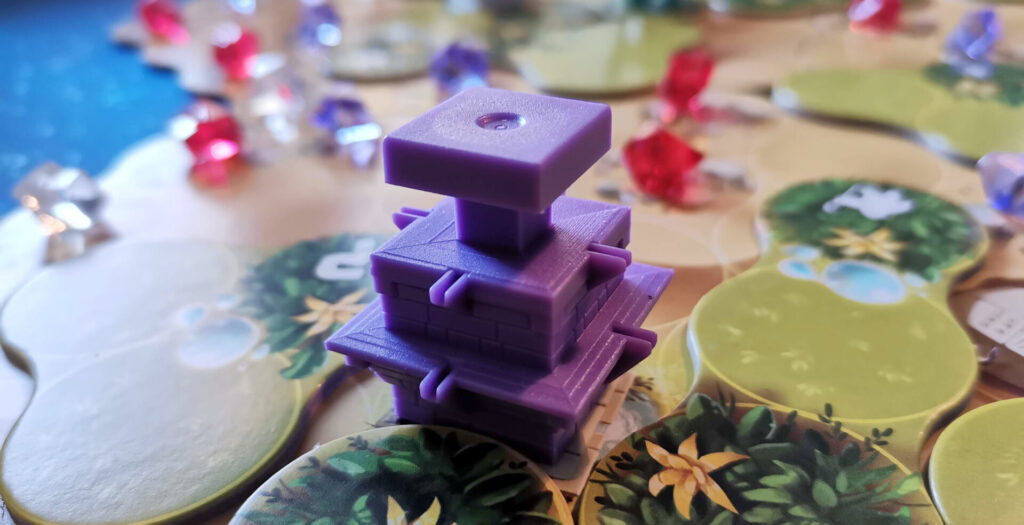
However, if you’re playing with newbies, kids, or you just don’t like too much player interaction in your games, then you can play it differently. If you don’t want to frighten anyone off you can focus on making your sprawl radiate outwards, and not venturing straight towards your opponents. Sometimes you’ll find this happens organically, and there’s an unspoken agreement that you’re not going to try to screw one another over. If you ever play Carcassonne, you’ll probably find the level of encroachment you have there, is mirrored in Ishtar.
Designer gardens
Despite looking very basic at the outset, Bruno Cathala proves once again why he’s one of the masters when it comes to games where ‘placing a thing’ is important. We’ll never know what influence Evan Singh (the second listed designer) had on the game, because the name is a pseudonym for a designer who wished to remain anonymous. It looks, and in fact is, very simple to just pick a tile and place it, but doing it well is tricky. You can tell just from your first play how much work has gone into the seemingly random tiles and maps.
With every placement you make, the designers have given you difficult choices. You want to claim the tempting gems, so you can buy more trees to place and to up-skill your workers, but to do so you’ve got to spread yourself thin. When you’re trying to grow big, contiguous areas of garden, it forces you to make compromises you don’t want to make. And that’s fun!
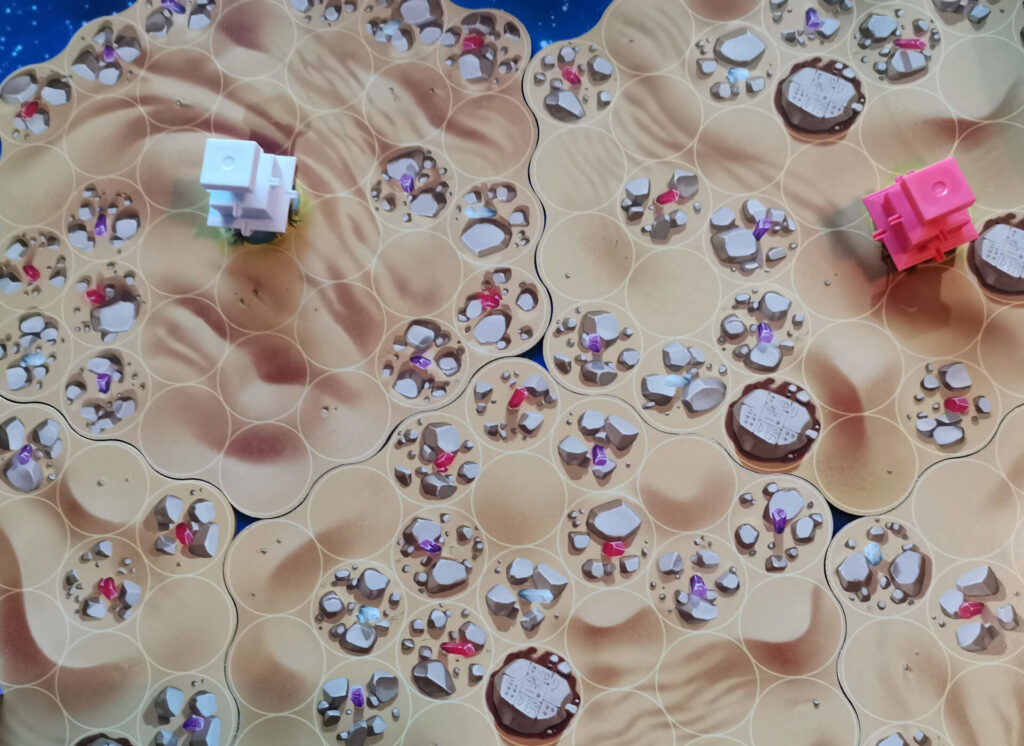
One of my favourite things about Ishtar is how the board changes from the start to the end of the game. Not in terms of how the situation has changed for the players, but in the physical sight of the boards in front of you. What were a few, barren, beige boards, turn into lush, green oases. When the trees get added to the board it adds a third dimension, as they tower above the desert floor. It all just feels more alive, and it ties the theme in nicely. Which is good, as theme feels a little sticky-taped on for the most part.
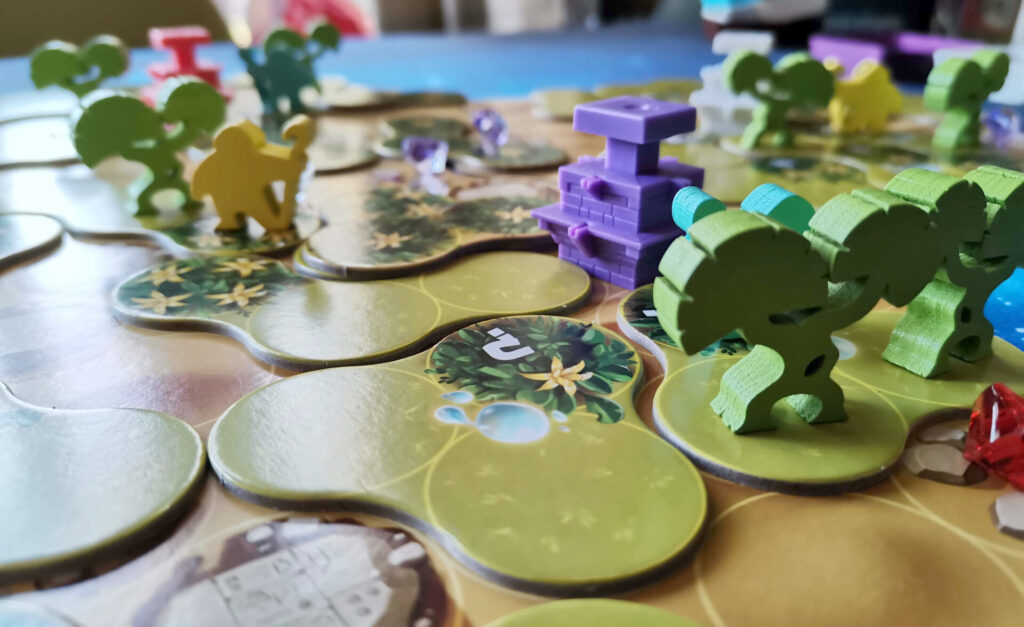
Final Thoughts
Everyone should have one or two good tile-laying games in their collection, in my opinion. They’re great games to introduce to people who don’t play games. Aside from the ubiquitous Carcassonne, Bruno Cathala has provided one of the mainstays in that category for a long time, with Kingdomino. Ishtar is where I’d point people now though if they want something a little more ‘grown-up’ than Kingdomino. That’s not to put Kingdomino down, it’s a great game, but there’s far more meat on the bones of Ishtar.
The modular playing boards mean the map grows evenly with any player count, and personally I think it works as well with two players as it does with four. In fact, with things get interesting when someone doesn’t want to remain in their area, the bit of the board closest to them. Ishtar plays quickly, you can usually finish a game within an hour, and the components are great. It’s definitely a family game, if you’ve got older children, and a fantastic game for your collection if you prefer your games on the lighter side.

If you’re after a tile-laying puzzle, with plenty of room to forge your own path with strategy, you could do a lot worse than picking up Ishtar. A step up from Kingdomino, but I think that’s a good thing.
Review copy kindly provided by Coiledspring Games. Thoughts and opinions are my own.

Ishtar: Gardens of Babylon (2019)
Designers: Bruno Cathala, Evan Singh
Publisher: Iello
Art: Biboun
Players: 2-4
Playing time: 45-60 minutes







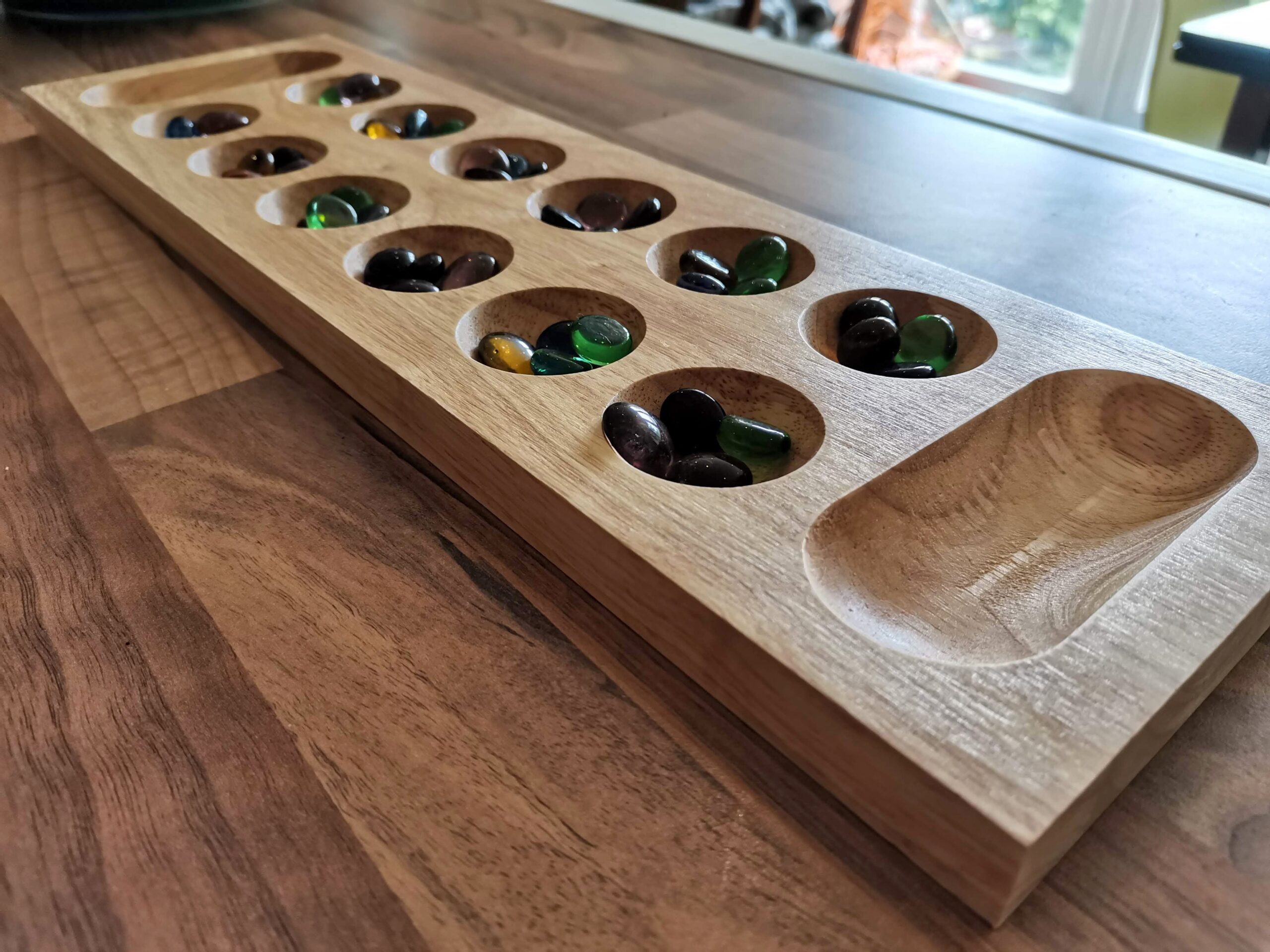




Thank you for the review. I looked at this for a while, I even saw it at Essen but never got to play and never stumbled across reviews before. I am a fan of several of Cathala’s other games. This might slip into one of my next orders.
Hey, good to hear from you Yashima 🙂
I agree, Bruno makes a good game. It’s much more of a weekday evening game, or something I’d even get my parents to play I think. It’s nicely abstract with easy turns.
Collections cannot just be the heavy-weight’s that you need a separate evening to teach 🙂 Midweight euros definitely have a place in my collection.
Thanks for the review :D. Think I’m going to purchase this one, as a fan of tile laying games. I already own Carcassonne(with lots of expansions), Cacao(also with expansions), Lanterns: the harvest festival and Karuba. Do you think this game falls in the same category or is it thougher to grasp then these titles I mention?